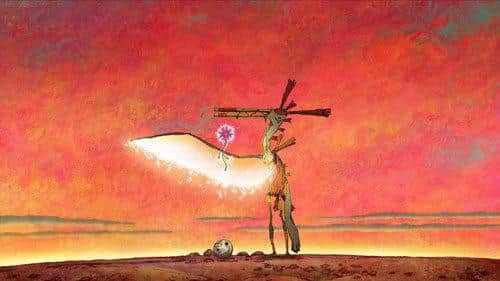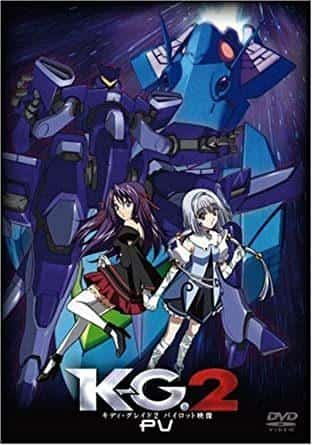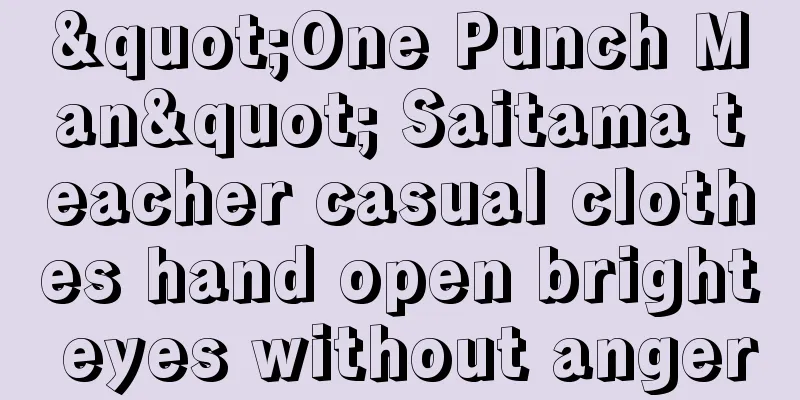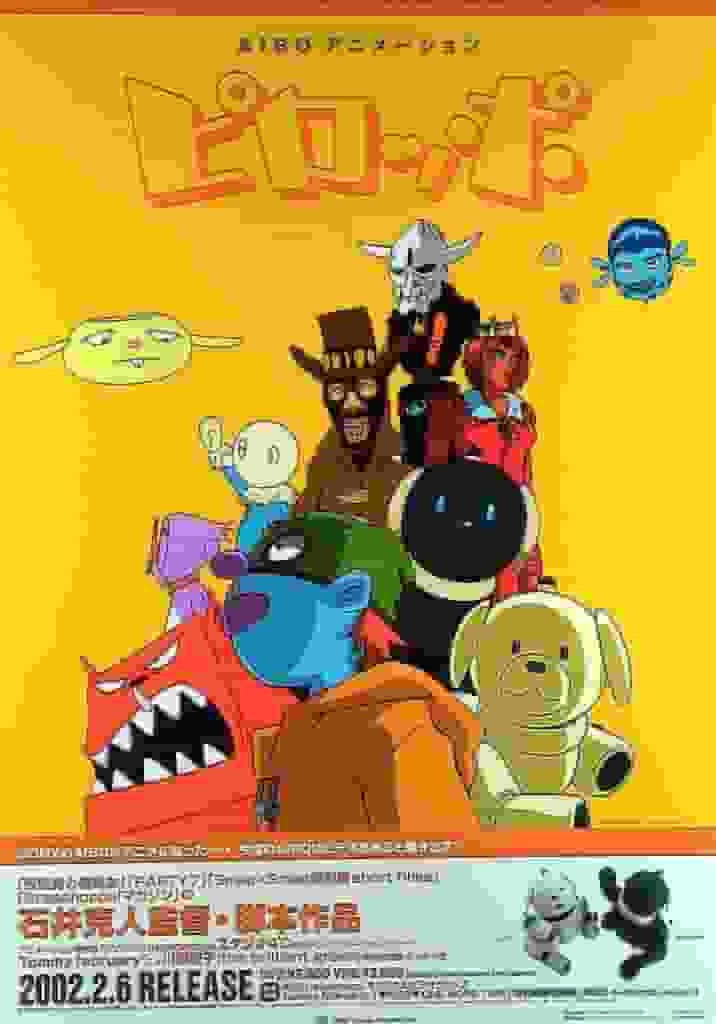The unique appeal and reviews of "Genius Party": A must-see collection of short stories for anime fans

"Genius Party": A visual feast that brings together the creative geniusesGenius Party is a Japanese animation film released on July 7, 2007. It is an omnibus-style work in which seven different directors demonstrate their individual personalities and talents. Produced by STUDIO4℃ and distributed by Nikkatsu, the film packs seven different stories and visual beauty into a short 102 minutes. Below, we will take a closer look at each episode of Genius Party and delve deeper into the appeal of the work as a whole. ■ Public Mediatheater ■ Original MediaAnime Original ■ Release dateJuly 7, 2007 - January 1, 2000 ■Distribution companyNikkatsu ■Frequencies102 min ■ Number of EpisodesEpisode 1 ■ DirectorAtsuko Fukushima, Masaharu Kawamori, Shinji Kimura, Yoji Fukuyama, Hideki Futamura, Masaaki Yuasa, Shinichiro Watanabe ■ ProductionSTUDIO4℃ ■Works©Genius Party ■ StoryEpisode detailsGenius Party is an omnibus-style animated film made up of seven different episodes, each with its own story and visual expression, providing viewers with new sensations and surprises. "GENIUS PARTY"A world of visual images that stimulates the senses, with the motif of the moment when an image is born. Directed by Atsuko Fukushima. Her unique perspective and sensibility are expressed as visual works of art. Abstract images and music are fused together to stimulate the viewer's imagination. "Shanghai Great Dragon"A young boy living in Shanghai, Chen Gonglong, transforms into a hero of justice with a mysterious stick that materializes what he draws! He fights against mysterious life forms to protect the Earth. Directed by Shoji Kawamori. The highlights of the film are Kawamori's specialty mecha designs and action scenes, and the story revolves around the pure imagination of a child. "Destiny Four"The boys try to help a frog that has wandered into a strange world back to earth... Directed by Kimura Shinji, the film depicts a world where fantasy and reality intersect, and the friendship and courage of the boys. It is characterised by beautiful visuals that make full use of CGI. "Door chime"One day, a high school boy named Yagisawa Yu suddenly finds himself with another version of himself. Without even knowing why, Yu finds himself at the mercy of this other version of himself. Directed by Fukuyama Yoji, the film depicts the extraordinary hidden within the ordinary, delving deeply into issues of self-identity and identity. "LIMIT CYCLE"A man works as if he is obsessed with something. After finishing work, he goes out into the city and finds a butterfly and chases after it. A world different from reality unfolds before him. Directed by Hideki Futamura. Depicting the boundary between reality and fantasy, the film expresses the sense of liberation that comes from breaking away from the daily routine. "Dreaming Machine"A baby is thrown into a strange desert-like world and grows up as he continues his journey. Directed by Masaaki Yuasa. Yuasa's unique style of drawing and storytelling portrays the baby's growth and adventure. The theme is the beauty of the birth and growth of life. "BABY BLUE"Sho and Hazuki are childhood friends who are high school students. The two decide to skip school for a day and go on a little trip. Directed by Shinichiro Watanabe, it depicts the bittersweetness of youth and the delicate relationships between friendship and love. Yoko Kanno's music adds depth to the story. ■ExplanationBackground and significance of the workGenius Party is a project that brings together the geniuses of Japanese animation. With their world-renowned talents, a completely new party movie has been born. The directors were given zero constraints, and each of them used their free ideas and expressiveness to create the work. The film features a star-studded cast including Yuya Yagira, who won the Best Actor Award at the 57th Cannes Film Festival, and Rinko Kikuchi, who stole the show at this year's Academy Awards. The film also had its world premiere at the Japan Festival at the Kennedy Center in February 2008, and was introduced to the world as a representative work of Japanese culture. The personalities of the seven filmmakers sometimes confront each other and sometimes resonate with each other, striking the viewer's sensibilities directly. According to the official website of STUDIO4℃, this work is described as "a world of images that stimulate the senses, with the motif of the moment when an image is born." Genius Party is a work that pursues the fusion of visual art and storytelling, providing viewers with new perspectives and emotions. While each episode has a different theme and style, they all share a consistent aesthetic and message. ■CastCast of each episode"Shanghai Great Dragon"
"Destiny Four"
"Door chime"
"LIMIT CYCLE"
"Dreaming Machine"
"BABY BLUE"
■ Main staffStaff of each episode
"GENIUS PARTY"
"Shanghai Great Dragon"
"Destiny Four"
"Door chime"
"LIMIT CYCLE"
"Dreaming Machine"
"BABY BLUE"
■ Main CharactersMain characters of each episode"Shanghai Great Dragon"
"Destiny Four"
"Door chime"
"LIMIT CYCLE"
"Dreaming Machine"
"BABY BLUE"
■ Related worksRelated Works
■ Theme songs and musicTheme songs and music
■ Evaluation and recommendationGenius Party is a work that pursues the fusion of visual art and storytelling, and while each episode has a different theme and style, it conveys a consistent aesthetic and message as a whole. Providing viewers with new perspectives and emotions, this film is a must-see, especially for those interested in animation and video art. The directors of each episode have maximized their individuality and talent to provide visual surprises and excitement. Shoji Kawamori's Shanghai Dragon combines the pure imagination of a child with mecha design, while Shinji Kimura's Destiny Four features beautiful images where fantasy and reality intersect. Yoji Fukuyama's Door Chime depicts the extraordinary hidden within the everyday, delving deeply into the issue of self-identity. Hideki Futamura's LIMIT CYCLE depicts the boundary between reality and fantasy, expressing the sense of liberation that comes from breaking away from the everyday routine. Masaaki Yuasa's "Dreaming Machine" focuses on the beauty of the birth and growth of life, while Shinichiro Watanabe's "BABY BLUE" depicts the bittersweetness of youth and the delicate relationships of friendship and love. This film pursues the fusion of visual art and storytelling, providing viewers with new perspectives and excitement. It is a must-see, especially for those interested in animation and video art, with the directors of each episode demonstrating their individuality and talent to the fullest, providing visual surprises and excitement. "Genius Party" is a work that pursues the fusion of visual art and storytelling, with each episode having a different theme and style, but conveying a consistent aesthetic and message as a whole. This film offers viewers with new perspectives and excitement, providing viewers with new perspectives and excitement. It is a must-see, especially for those interested in animation and video art, with the directors of each episode demonstrating their individuality and talent to the fullest, providing visual surprises and excitement. Shoji Kawamori's "Shanghai Dragon" combines the pure imagination of a child with mecha design, while Shinji Kimura's "Destiny Four" features beautiful images where fantasy and reality intersect. Yoji Fukuyama's "Door Chime" depicts the extraordinary hidden within the everyday, delving deeply into the issue of self-identity. Hideki Futamura's "LIMIT CYCLE" depicts the boundary between reality and fantasy, expressing the sense of liberation that comes from escaping from the everyday routine. Masaaki Yuasa's "Dreaming Machine" focuses on the beauty of the birth and growth of life, while Shinichiro Watanabe's "BABY BLUE" depicts the bittersweetness of youth and the delicate relationships of friendship and love. This film pursues the fusion of visual art and storytelling, providing viewers with new perspectives and emotions. It is a must-see, especially for those interested in animation and video art, and the directors of each episode maximize their individual personalities and talents to provide visual surprises and emotions. Genius Party is a work that pursues the fusion of visual art and storytelling, and while each episode has a different theme and style, it conveys a consistent aesthetic and message as a whole. Providing viewers with new perspectives and emotions, this film is a must-see, especially for those interested in animation and video art. The directors of each episode have maximized their individuality and talent to provide visual surprises and excitement. Shoji Kawamori's Shanghai Dragon combines the pure imagination of a child with mecha design, while Shinji Kimura's Destiny Four features beautiful images where fantasy and reality intersect. Yoji Fukuyama's Door Chime depicts the extraordinary hidden within the everyday, delving deeply into the issue of self-identity. Hideki Futamura's LIMIT CYCLE depicts the boundary between reality and fantasy, expressing the sense of liberation that comes from breaking away from the everyday routine. Masaaki Yuasa's "Dreaming Machine" focuses on the beauty of the birth and growth of life, while Shinichiro Watanabe's "BABY BLUE" depicts the bittersweetness of youth and the delicate relationships of friendship and love. This film pursues the fusion of visual art and storytelling, providing viewers with new perspectives and excitement. It is a must-see, especially for those interested in animation and video art, with the directors of each episode demonstrating their individuality and talent to the fullest, providing visual surprises and excitement. "Genius Party" is a work that pursues the fusion of visual art and storytelling, with each episode having a different theme and style, but conveying a consistent aesthetic and message as a whole. This film offers viewers with new perspectives and excitement, providing viewers with new perspectives and excitement. It is a must-see, especially for those interested in animation and video art, with the directors of each episode demonstrating their individuality and talent to the fullest, providing visual surprises and excitement. Shoji Kawamori's "Shanghai Dragon" combines the pure imagination of a child with mecha design, while Shinji Kimura's "Destiny Four" features beautiful images where fantasy and reality intersect. Yoji Fukuyama's "Door Chime" depicts the extraordinary hidden within the everyday, delving deeply into the issue of self-identity. Hideki Futamura's "LIMIT CYCLE" depicts the boundary between reality and fantasy, expressing the sense of liberation that comes from escaping from the everyday routine. Masaaki Yuasa's "Dreaming Machine" focuses on the beauty of the birth and growth of life, while Shinichiro Watanabe's "BABY BLUE" depicts the bittersweetness of youth and the delicate relationships of friendship and love. This film pursues the fusion of visual art and storytelling, providing viewers with new perspectives and emotions. It is a must-see, especially for those interested in animation and video art, and the directors of each episode maximize their individual personalities and talents to provide visual surprises and emotions. Genius Party is a work that pursues the fusion of visual art and storytelling, and while each episode has a different theme and style, it conveys a consistent aesthetic and message as a whole. Providing viewers with new perspectives and emotions, this film is a must-see, especially for those interested in animation and video art. The directors of each episode have maximized their individuality and talent to provide visual surprises and excitement. Shoji Kawamori's Shanghai Dragon combines the pure imagination of a child with mecha design, while Shinji Kimura's Destiny Four features beautiful images where fantasy and reality intersect. Yoji Fukuyama's Door Chime depicts the extraordinary hidden within the everyday, delving deeply into the issue of self-identity. Hideki Futamura's LIMIT CYCLE depicts the boundary between reality and fantasy, expressing the sense of liberation that comes from breaking away from the everyday routine. Masaaki Yuasa's "Dreaming Machine" focuses on the beauty of the birth and growth of life, while Shinichiro Watanabe's "BABY BLUE" depicts the bittersweetness of youth and the delicate relationships of friendship and love. This film pursues the fusion of visual art and storytelling, providing viewers with new perspectives and excitement. It is a must-see, especially for those interested in animation and video art, with the directors of each episode demonstrating their individuality and talent to the fullest, providing visual surprises and excitement. "Genius Party" is a work that pursues the fusion of visual art and storytelling, with each episode having a different theme and style, but conveying a consistent aesthetic and message as a whole. This film offers viewers with new perspectives and excitement, providing viewers with new perspectives and excitement. It is a must-see, especially for those interested in animation and video art, with the directors of each episode demonstrating their individuality and talent to the fullest, providing visual surprises and excitement. Shoji Kawamori's "Shanghai Dragon" combines the pure imagination of a child with mecha design, while Shinji Kimura's "Destiny Four" features beautiful images where fantasy and reality intersect. Yoji Fukuyama's "Door Chime" depicts the extraordinary hidden within the everyday, delving deeply into the issue of self-identity. Hideki Futamura's "LIMIT CYCLE" depicts the boundary between reality and fantasy, expressing the sense of liberation that comes from escaping from the everyday routine. Masaaki Yuasa's "Dreaming Machine" focuses on the beauty of the birth and growth of life, while Shinichiro Watanabe's "BABY BLUE" depicts the bittersweetness of youth and the delicate relationships of friendship and love. This film pursues the fusion of visual art and storytelling, providing viewers with new perspectives and emotions. It is a must-see, especially for those interested in animation and video art, and the directors of each episode maximize their individual personalities and talents to provide visual surprises and emotions. Genius Party is a work that pursues the fusion of visual art and storytelling, and while each episode has a different theme and style, it conveys a consistent aesthetic and message as a whole. Providing viewers with new perspectives and emotions, this film is a must-see, especially for those interested in animation and video art. The directors of each episode have maximized their individuality and talent to provide visual surprises and excitement. Shoji Kawamori's Shanghai Dragon combines the pure imagination of a child with mecha design, while Shinji Kimura's Destiny Four features beautiful images where fantasy and reality intersect. Yoji Fukuyama's Door Chime depicts the extraordinary hidden within the everyday, delving deeply into the issue of self-identity. Hideki Futamura's LIMIT CYCLE depicts the boundary between reality and fantasy, expressing the sense of liberation that comes from breaking away from the everyday routine. Masaaki Yuasa's "Dreaming Machine" focuses on the beauty of the birth and growth of life, while Shinichiro Watanabe's "BABY BLUE" depicts the bittersweetness of youth and the delicate relationships of friendship and love. This film pursues the fusion of visual art and storytelling, providing viewers with new perspectives and excitement. It is a must-see, especially for those interested in animation and video art, with the directors of each episode demonstrating their individuality and talent to the fullest, providing visual surprises and excitement. "Genius Party" is a work that pursues the fusion of visual art and storytelling, with each episode having a different theme and style, but conveying a consistent aesthetic and message as a whole. This film offers viewers with new perspectives and excitement, providing viewers with new perspectives and excitement. It is a must-see, especially for those interested in animation and video art, with the directors of each episode demonstrating their individuality and talent to the fullest, providing visual surprises and excitement. Shoji Kawamori's "Shanghai Dragon" combines the pure imagination of a child with mecha design, while Shinji Kimura's "Destiny Four" features beautiful images where fantasy and reality intersect. Yoji Fukuyama's "Door Chime" depicts the extraordinary hidden within the everyday, delving deeply into the issue of self-identity. Hideki Futamura's "LIMIT CYCLE" depicts the boundary between reality and fantasy, expressing the sense of liberation that comes from escaping from the everyday routine. Masaaki Yuasa's "Dreaming Machine" focuses on the beauty of the birth and growth of life, while Shinichiro Watanabe's "BABY BLUE" depicts the bittersweetness of youth and the delicate relationships of friendship and love. This film pursues the fusion of visual art and storytelling, providing viewers with new perspectives and emotions. It is a must-see, especially for those interested in animation and video art, and the directors of each episode maximize their individual personalities and talents to provide visual surprises and emotions. Genius Party is a work that pursues the fusion of visual art and storytelling, and while each episode has a different theme and style, it conveys a consistent aesthetic and message as a whole. Providing viewers with new perspectives and emotions, this film is a must-see, especially for those interested in animation and video art. The directors of each episode have maximized their individuality and talent to provide visual surprises and excitement. Shoji Kawamori's Shanghai Dragon combines the pure imagination of a child with mecha design, while Shinji Kimura's Destiny Four features beautiful images where fantasy and reality intersect. Yoji Fukuyama's Door Chime depicts the extraordinary hidden within the everyday, delving deeply into the issue of self-identity. Hideki Futamura's LIMIT CYCLE depicts the boundary between reality and fantasy, expressing the sense of liberation that comes from breaking away from the everyday routine. Masaaki Yuasa's "Dreaming Machine" focuses on the beauty of the birth and growth of life, while Shinichiro Watanabe's "BABY BLUE" depicts the bittersweetness of youth and the delicate relationships of friendship and love. This film pursues the fusion of visual art and storytelling, providing viewers with new perspectives and excitement. It is a must-see, especially for those interested in animation and video art, with the directors of each episode demonstrating their individuality and talent to the fullest, providing visual surprises and excitement. "Genius Party" is a work that pursues the fusion of visual art and storytelling, with each episode having a different theme and style, but conveying a consistent aesthetic and message as a whole. This film offers viewers with new perspectives and excitement, providing viewers with new perspectives and excitement. It is a must-see, especially for those interested in animation and video art, with the directors of each episode demonstrating their individuality and talent to the fullest, providing visual surprises and excitement. Shoji Kawamori's "Shanghai Dragon" combines the pure imagination of a child with mecha design, while Shinji Kimura's "Destiny Four" features beautiful images where fantasy and reality intersect. Yoji Fukuyama's "Door Chime" depicts the extraordinary hidden within the everyday, delving deeply into the issue of self-identity. Hideki Futamura's "LIMIT CYCLE" depicts the boundary between reality and fantasy, expressing the sense of liberation that comes from escaping from the everyday routine. Masaaki Yuasa's "Dreaming Machine" focuses on the beauty of the birth and growth of life, while Shinichiro Watanabe's "BABY BLUE" depicts the bittersweetness of youth and the delicate relationships of friendship and love. This film pursues the fusion of visual art and storytelling, providing viewers with new perspectives and emotions. It is a must-see, especially for those interested in animation and video art, and the directors of each episode maximize their individual personalities and talents to provide visual surprises and emotions. Genius Party is a work that pursues the fusion of visual art and storytelling, and while each episode has a different theme and style, it conveys a consistent aesthetic and message as a whole. Providing viewers with new perspectives and emotions, this film is a must-see, especially for those interested in animation and video art. The directors of each episode have maximized their individuality and talent to provide visual surprises and excitement. Shoji Kawamori's Shanghai Dragon combines the pure imagination of a child with mecha design, while Shinji Kimura's Destiny Four features beautiful images where fantasy and reality intersect. Yoji Fukuyama's Door Chime depicts the extraordinary hidden within the everyday, delving deeply into the issue of self-identity. Hideki Futamura's LIMIT CYCLE depicts the boundary between reality and fantasy, expressing the sense of liberation that comes from breaking away from the everyday routine. Masaaki Yuasa's "Dreaming Machine" focuses on the beauty of the birth and growth of life, while Shinichiro Watanabe's "BABY BLUE" depicts the bittersweetness of youth and the delicate relationships of friendship and love. This film pursues the fusion of visual art and storytelling, providing viewers with new perspectives and excitement. It is a must-see, especially for those interested in animation and video art, with the directors of each episode demonstrating their individuality and talent to the fullest, providing visual surprises and excitement. "Genius Party" is a work that pursues the fusion of visual art and storytelling, with each episode having a different theme and style, but conveying a consistent aesthetic and message as a whole. This film offers viewers with new perspectives and excitement, providing viewers with new perspectives and excitement. It is a must-see, especially for those interested in animation and video art, with the directors of each episode demonstrating their individuality and talent to the fullest, providing visual surprises and excitement. Shoji Kawamori's "Shanghai Dragon" combines the pure imagination of a child with mecha design, while Shinji Kimura's "Destiny Four" features beautiful images where fantasy and reality intersect. Yoji Fukuyama's "Door Chime" depicts the extraordinary hidden within the everyday, delving deeply into the issue of self-identity. Hideki Futamura's "LIMIT CYCLE" depicts the boundary between reality and fantasy, expressing the sense of liberation that comes from escaping from the everyday routine. Masaaki Yuasa's "Dreaming Machine" focuses on the beauty of the birth and growth of life, while Shinichiro Watanabe's "BABY BLUE" depicts the bittersweetness of youth and the delicate relationships of friendship and love. This film pursues the fusion of visual art and storytelling, providing viewers with new perspectives and emotions. It is a must-see, especially for those interested in animation and video art, and the directors of each episode maximize their individual personalities and talents to provide visual surprises and emotions. Genius Party is a work that pursues the fusion of visual art and storytelling, and while each episode has a different theme and style, it conveys a consistent aesthetic and message as a whole. Providing viewers with new perspectives and emotions, this film is a must-see, especially for those interested in animation and video art. The directors of each episode have maximized their individuality and talent to provide visual surprises and excitement. Shoji Kawamori's Shanghai Dragon combines the pure imagination of a child with mecha design, while Shinji Kimura's Destiny Four features beautiful images where fantasy and reality intersect. Yoji Fukuyama's Door Chime depicts the extraordinary hidden within the everyday, delving deeply into the issue of self-identity. Hideki Futamura's LIMIT CYCLE depicts the boundary between reality and fantasy, expressing the sense of liberation that comes from breaking away from the everyday routine.になったんです。 English: The first thing you can do is to find the best one to do.になったんです。 English: The first thing you can do is to find the best one to do.になったんです。 English: The first thing you can do is to find the best one to do.になったんです。 English: The first thing you can do is to find the best one to do.になったんです。 English: The first thing you can do is to find the best one to do.になったんです。 English: The first thing you can do is to find the best one to do.になったんです。 English: The first thing you can do is to find the best one to do.になったんです。 English: The first thing you can do is to find the best one to do.になったんです。 English: The first thing you can do is to find the best one to do.になったんです。 English: The first thing you can do is to find the best one to do.になったんです。 English: The first thing you can do is to find the best one to do.になったんです。 English: The first thing you can do is to find the best one to do.になったんです。 English: The first thing you can do is to find the best one to do.になったんです。 English: The first thing you can do is to find the best one to do.になったんです。 English: The first thing you can do is to find the best one to do.になったんです。 English: The first thing you can do is to find the best one to do.になったんです。 English: The first thing you can do is to find the best one to do.になったんです。 English: The first thing you can do is to find the best one to do.になったんです。 English: The first thing you can do is to find the best one to do.になったんです。 English: The first thing you can do is to find the best one to do.になったんです。 English: The first thing you can do is to find the best one to do.になったんです。 English: The first thing you can do is to find the best one to do.になったんです。 English: The first thing you can do is to find the best one to do.になったんです。 English: The first thing you can do is to find the best one to do.になったんです。 English: The first thing you can do is to find the best one to do. In Kawamori Masaharu's "Shanghai Dairyu", a child's pure imagination and mecha design combine, while in Kimura Shinji's "Destic Four", a beautiful image of fantasy and reality intersecting. In Fukuyama Yoji's "Door Chime", a portrays the extraordinary hidden within everyday life, and self-identity is also characteristic. |
<<: The appeal and evaluation of "Potemayo": New possibilities for magical girls
>>: The appeal and evaluation of "Phitension☆School": A must-read review for anime fans
Recommend
Netflix animation "Samurai Yasuke" new Chinese trailer released, airing on April 29
Today (April 2), Netflix officially announced tha...
The appeal and reputation of "Ashita no Joe": A monumental boxing anime
Tomorrow's Joe - The eternal boxing legend ■ ...
The third PV of "Witch's Journey" is officially released, and the key visual image is released, and it will be broadcast in October this year
According to the new information released by the ...
Appeal and evaluation of the dress-up anime "Once upon a time"
"Dress Up Anime Once Upon a Time": A ch...
The "Soul Energy MAX" version of the "Yu-Gi-Oh" Giant God Soldier is priced at 1,400 yuan
Konami has launched the "Soul Energy MAX&quo...
The new film "Number 17" directed by "Parasite" has been confirmed to be introduced and the release date is yet to be determined
The sci-fi film "Mickey 17" (previously...
"The Deer Who Crossed the Sea": Reevaluating the moving song of the people
"The Deer Who Crossed the Sea": NHK'...
Monsters in the Monster Hunter movie are bigger than dinosaurs in Jurassic World
Recently, Paul Anderson, director of the movie &q...
DC's new interactive animated film "Batman: Death in the Family" first released trailer, you can even kill Robin
The first trailer of DC interactive animation &qu...
The appeal and evaluation of "Saga of Tanya the Evil": A deep review
"Youjo Senki" - A brutal story told by ...
The fourth episode of "Chinese Legends" is now online on B station, with over 4 million followers
Recently, the animation "Chinese Fantasy&quo...
DC New Year WeChat Red Packet Covers: Batman, Aquaman, The Flash, etc.
Recently, DC China released the New Year WeChat r...
Mysterious man Joe appears in "Breaking Bad" movie 30-second Chinese trailer released
Today (September 29), Netflix released another tr...
The Boys Season 4 New Cast Announced, Detroit Become Human Female Lead Joins
Today (August 2), The Boys officially announced t...
Peacemaker Season 1 Finale Sets Viewership Records: Zhao Xi Na Thanks Jason Momoa and Ezra Miller
The first season finale of the "Suicide Squa...









